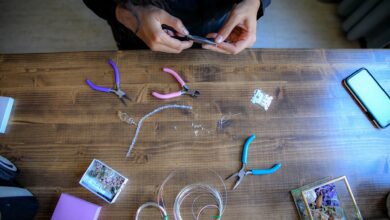How Millennials Are Disrupting Patent: D962528s

Patenting has been a crucial aspect of innovation and progress for centuries. It ensures that inventors can protect their ideas from being stolen and allows them to reap the benefits of their hard work. However, in recent years, millennials have been disrupting the patent world with a new approach to innovation. The rise of technology and the fast-paced nature of society have created a unique set of challenges that this generation is ready to tackle head-on. In this blog post, we’ll take a closer look at how millennials are shaking up patent D962528s – and what it means for the future of innovation as we know it!
What are D962528s?
patent: d962528s is a patent number that identifies a unique invention or idea. It’s the official way of distinguishing one person’s intellectual property from another’s and ensuring that their creation remains solely theirs. This process involves submitting an application to the United States Patent and Trademark Office (USPTO), where it undergoes rigorous examination to determine its eligibility.
Once approved, D962528s grants its owner legal protection against anyone who wants to use, copy, or sell their invention without permission. In exchange for this protection, the inventor must disclose all details about their creation in a public record – including how it works and how it can be made.
The goal of patent: d962528s is to incentivize innovation by giving inventors ownership over their creations. This allows them to profit from them as well as invest further into research and development. However, some argue that this system stifles creativity by making ideas exclusive rather than collaborative.
Despite these concerns, patent: d962528s remains a vital part of modern innovation – protecting inventors’ rights while encouraging new ideas and technological advancements.
How are Millennials disrupting patent D962528s?
Millennials are known for their desire to shake things up and challenge the status quo. One area where this is particularly evident is in the world of patents, especially when it comes to D962528s.
Unlike previous generations, millennials are less concerned with owning intellectual property and more focused on collaboration and sharing ideas. This means they are disrupting traditional patent systems that were designed to protect individual inventors and corporations.
Instead of filing patents, many millennials are choosing to release their ideas open-source or through creative commons licenses. By doing so, they can collaborate with others who share similar interests and work together to bring new products and technologies to market.
Another way that millennials are disrupting patent D962528s is through crowdsourcing funding for projects. Rather than relying on venture capitalists or other traditional sources of funding, many young entrepreneurs are using platforms like Kickstarter or Indiegogo to raise money directly from consumers.
This not only helps them get their products off the ground but also allows them to build a community around their brand which can lead to long-term success.
Millennials’ approach towards patents may seem unconventional compared to previous generations but it’s clear that it’s having a significant impact on innovation in today’s society.
The Pros and Cons of Disrupting Patent D962528s
Disrupting Patent D962528s, like any other disruption, has its pros and cons. On one hand, it can lead to increased innovation and a more level playing field for inventors. However, on the other hand, it can also lead to decreased incentives for inventors and potential legal issues.
One of the most significant benefits of disrupting patent D962528s is that it can encourage greater levels of innovation by making information more accessible to everyone. This means that even small businesses or entrepreneurs with limited resources may have access to valuable technology that they wouldn’t otherwise be able to obtain.
On the downside, however, this could create an environment where large companies are less incentivized to invest in research and development since their ideas would not be as protected under traditional patent laws. Additionally, without proper regulation surrounding disruptions in patents like D962528s specifically; there could be legal ramifications for those who do infringe upon existing patents unknowingly.
Though; if done effectively – disrupting patent D962528s has the potential to bring about positive changes in how intellectual property rights are managed which will ultimately benefit all parties involved by allowing for greater levels of collaboration between individuals within various industries
The Problem with Patenting
Patenting has long been viewed as a necessary and valuable tool for protecting intellectual property. However, it also comes with its fair share of problems. One issue is that the process can be time-consuming and expensive, which can be particularly problematic for small businesses or individual inventors who may not have the resources to navigate the system.
Another issue is that patents often cover very broad concepts rather than specific ideas, leading to a proliferation of “patent trolls” who use their patents primarily as a means of litigation rather than innovation. This can stifle competition and creativity in industries where these trolls are prevalent.
Additionally, some argue that patenting actually hinders innovation by creating barriers to entry for smaller players in a given industry. These barriers prevent new ideas from being shared freely and openly among competitors, ultimately slowing down progress within an industry.
While patenting certainly has its benefits in terms of protecting intellectual property rights, it’s important to recognize the potential downsides as well. As technology continues to advance at an unprecedented rate, finding ways to balance protection with access will become increasingly crucial moving forward.
How Millennials Are Changing the Conversation
Millennials are changing the conversation around patent D962528s. They are bringing new ideas and perspectives to the table, challenging traditional thinking and practices in this field. One way they are doing this is by advocating for greater transparency in the patent process. Millennials believe that innovation should be accessible to everyone, not just a select few.
Furthermore, millennials recognize that patents can sometimes stifle innovation rather than encourage it. They are pushing for more open-source projects and collaboration among innovators instead of relying solely on proprietary technology protected by patents.
Another aspect where millennials are driving change is in their approach towards intellectual property rights. Many younger people see intellectual property as something that belongs to society as a whole, rather than being owned exclusively by individual companies or inventors.
Millennials’ fresh perspective on patent patent: d962528s has sparked important debates about how we can promote innovation while ensuring fair access for all. Their willingness to challenge existing norms and explore new solutions may pave the way for a brighter future of technological advancement and progress.
What This Means for the Future of Innovation
The disruption of patent patent: d962528s by millennials has significant implications for the future of innovation. With more open access to patented ideas, new and creative solutions can emerge that could potentially change entire industries. This shift in thinking promotes collaboration rather than competition, which is essential for progress.
Innovation is no longer limited to a select few corporations or individuals who have the resources to fund costly research and development projects. The democratization of intellectual property enables smaller players to enter the market with innovative ideas while leveling the playing field.
Moreover, it encourages transparency in idea-sharing processes, fostering an environment where creativity thrives without fear of infringement lawsuits. As a result, this may lead to faster technological advancements as innovators are free from legal barriers that stifle their work.
This trend also places greater emphasis on protecting true innovation through patents that offer real value instead of those used merely as tools for litigation. It eliminates frivolous patents and helps prioritize genuine inventions that push boundaries and create positive impacts.
Millennial-led disruptive changes in patenting practices provide opportunities for increased collaboration among inventors while promoting transparency and protection of authentic innovations. It’s an exciting time where we can expect even more breakthroughs in various fields due to these shifts in mindset regarding intellectual property rights.
D962528s – What are they?
D962528s is a patent number that refers to a specific invention or process that has been granted legal protection by the government. This particular patent covers a range of technologies, including software, hardware, and mechanical devices.
Patents are crucial in protecting intellectual property rights and ensuring innovation continues to thrive. They give inventors the exclusive right to use their inventions for a certain period of time, usually 20 years from the filing date. During this time, competitors cannot make, distribute or sell products based on these patents.
However, obtaining a patent can be an expensive and lengthy process that often discourages small businesses and startups from pursuing them. It also raises concerns about monopolies being created in certain industries due to large corporations having more resources to obtain patents than smaller entities.
The D962528s patent is just one example of how complex the world of patents can be. As technology advances at an unprecedented rate with Millennials leading the charge into new territories such as AI/ML/IoT blockchains etc., it’s important for entrepreneurs and innovators alike to understand how they could potentially disrupt this system through alternative means such as open-source initiatives or crowdfunding platforms like Kickstarter which may offer different solutions altogether!
How are millennials disrupting patent D962528s?
Millennials are known for their innovative and creative approach to problem-solving. With the rise of technology and a growing emphasis on collaboration, they have been able to disrupt traditional industries in unprecedented ways.
One area where millennials are making significant changes is in the patent industry. Specifically, they are challenging the way we think about patent D962528s. This type of patent refers to design patents that protect non-functional aspects of an invention, such as its aesthetic appeal.
In the past, obtaining a design patent was seen as essential for protecting intellectual property. However, millennials are questioning whether this is still necessary given the rapid pace of innovation and increasing demand for open-source solutions.
Many younger entrepreneurs view patents as outdated and irrelevant to their work. They believe that ideas should be shared freely rather than hoarded behind legal barriers. As a result, some startups have started releasing their designs under Creative Commons licenses instead of seeking out patents.
While this approach may seem risky at first glance, it can actually lead to more innovation and progress in certain fields. By working collaboratively and sharing information openly, companies can build on each other’s ideas more easily than if everything were locked away behind patents.
Millennials’ disruptive attitude towards patent D962528s is changing the conversation around intellectual property rights. It remains unclear how these changes will shape future innovations or impact established businesses – but one thing is certain: nothing stays stagnant for long when millennials get involved!
The pros and cons of this disruption
The disruption of patent D962528s by millennials has both positive and negative effects. On the one hand, it allows for new ideas to be brought to market faster, as companies no longer need to spend years navigating the complicated and expensive patent process. This can lead to greater innovation and creativity in industries ranging from technology to healthcare.
However, there are also drawbacks to this disruption. Without patents protecting their intellectual property, inventors may be less incentivized to create new products or technologies because they know that others can easily replicate their work without consequence. This could stifle innovation over time.
Additionally, the lack of clear legal protections for inventions means that smaller businesses may struggle against larger corporations with more resources at their disposal. The current patent system provides a level playing field where innovators of all sizes have equal access to protection under the law.
While there are certainly benefits associated with disrupting patent D962528s, it’s important for us as a society to carefully consider both sides before making any sweeping changes that could have significant impacts on our economy and future growth potential.
Why this is happening
Millennials are disrupting patent D962528s because they have grown up in a digital world that values collaboration, open-source knowledge sharing and creativity. They see the current patent system as outdated, restrictive, expensive and monopolistic.
The rise of social media platforms has also created a culture where ideas can spread rapidly and be built upon collectively. This is challenging traditional notions of intellectual property and ownership.
Furthermore, many millennials are entrepreneurs who value agility, innovation and speed to market over protecting their intellectual property rights. They would rather share their ideas openly with others to build on them than spend time and money on filing patents.
Moreover, technology has made it easier for people to access information about competitors’ products or services without infringing on existing patents. As such, some millennials argue that the current patent system stifles innovation by limiting the free flow of knowledge.
The disruption of patent D962528s by Millennials stems from a combination of factors including changes in cultural attitudes towards intellectual property rights stemming from the digital age’s growth; an increase in entrepreneurship amongst younger generations valuing flexibility over protectionism when it comes down developing new inventions; advancements within technology making it simpler for individuals seeking competitive data which could ultimately lead them away from investing into costly legal battles related to IP infringement claims etc…
How this will affect the future
The disruption of patent D962528s by Millennials has the potential to shape the future of innovation in a significant way. With more people challenging traditional methods of patenting, it is likely that we will see a shift towards more open and collaborative approaches.
One possible outcome is that patents become less important as a means of protecting intellectual property. Instead, companies may focus on building strong brands and reputations to stay competitive in their industries.
Another possibility is that we see an increase in alternative forms of protection such as Creative Commons licenses or trade secret protections. This would allow innovators to share their ideas without fear of losing control over them.
With greater access to information and technology, Millennials are also well-placed to drive innovation forward. By working together and sharing knowledge, they can develop new products and services much faster than ever before.
The disruption of patent: D962528s by Millennials presents both challenges and opportunities for businesses looking to stay ahead in today’s fast-paced world. Those who adapt quickly and embrace change are likely to thrive while those who resist could find themselves left behind.



